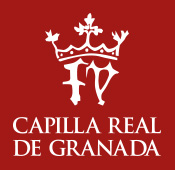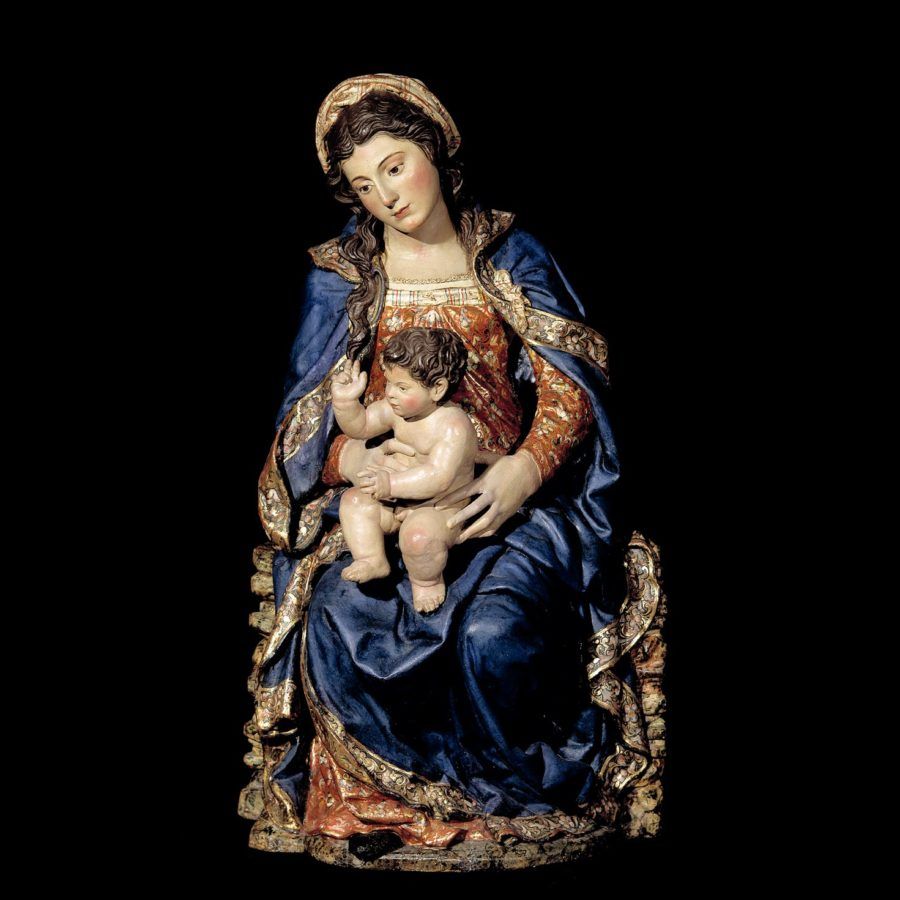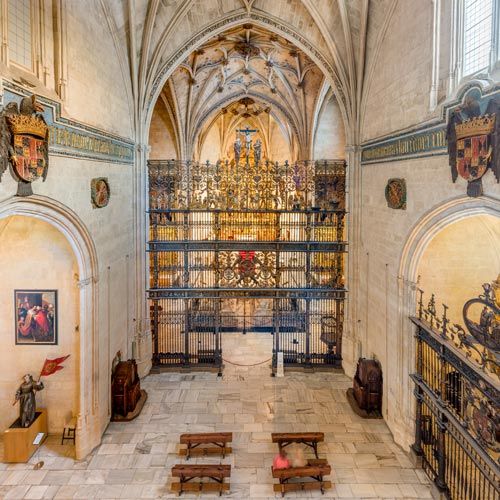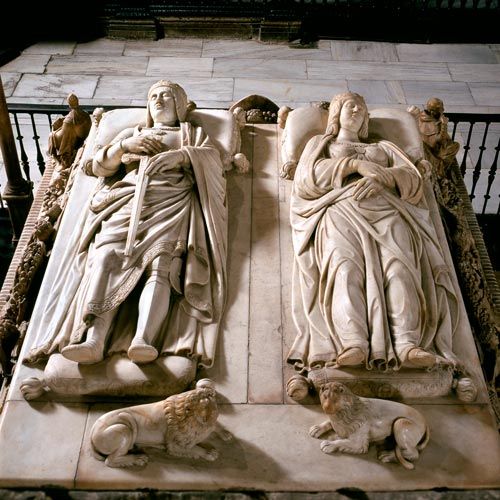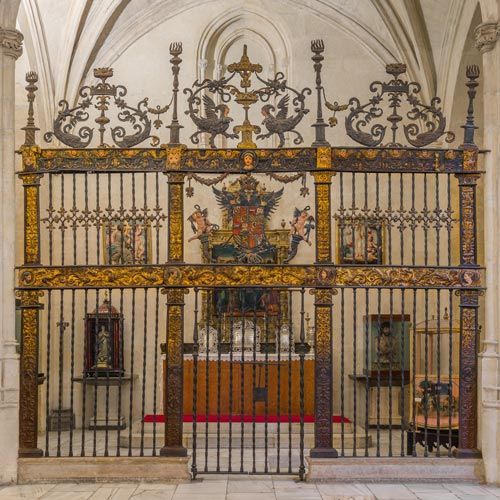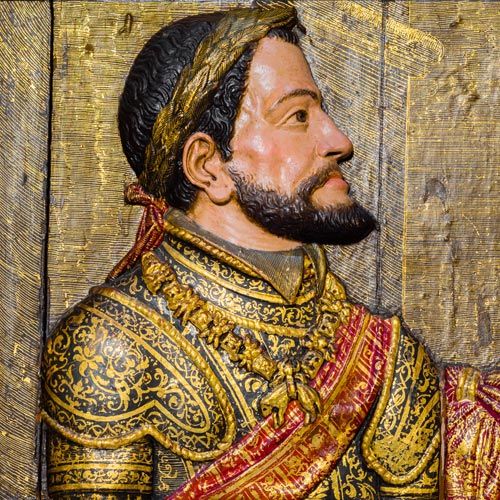The Main Altarpiece (1520-1522), work by Felipe Bigarny, is considered to be one of the first and biggest Plateresque altarpiece carved in Spain. The statues of the Catholic Kings in prayer are works by Diego de Siloé’s curia.
It is a work reminiscent of the Ogival style and the gothic distribution, movement and dramatic naturalism, and of the richness of the plateresque ornamental elements. It is an accurate reflection of the transitional moment between two periods —the medieval and modern periods— and between two styles: Gothic and Renaissance.
In order to understand the multiple messages of this exceptional plastic document, visitors must consider its historical aspects (cultural, religious, social, political) under which it was conceived and created. Its complex and meditated iconography represents symbolically three concepts of unity that are key within the government policy of the Catholic Kings. All the iconography representations are focused on three cores with their own thematic unity:
• Religious unity: Scenes of Jesus Christ’s life
• Political unity: Representations of St. John the Baptist and St. John the Evangelist
• Territorial unity: Iconography of the Catholic Kings and their work
Structurally, and beginning from the bottom, the altarpiece consists of a lower bench, bench and two sections or tiers (lower and upper tiers), and a top attic tier.
• The representations of the Altarpiece lower bench revolve around two local events occurred during the Catholic Kings kingdom. They are four relieves grouped in pairs. On the left, the Catholic Monarch with the Christian armies and the King Boabdil handing over to them the keys to the city of Granada (1492). On the right, the baptism of converted Muslims (1500).
• On the bench, the Virgin with the Child Jesus, adored by The Three Kings, appear as the main motif. On the left, and at the same level, we find Jesus Baptism representations, and on the right, we find St. John in Patmos Island.
• In the lower tier, and from our left: we find St. John the Baptist’s martyrdom, St. John the Baptist with the lamb, St. John the Evangelist with a chalice, St. John the Evangelist’s martyrdom.
• In the upper tier, and from our left: we find Jesus Christ bearing the Cross, The Calvary, the Pietà or the 5th Agony.
• In the top attic tier, the altarpiece’s end, and the beginning of the iconography, and the three persons of the Holy Trinity can be seen. In the highest place we find God the Father bust as an elderly gentleman holding the globe and with his right hand making as if to talk; underneath, the image of the Son of God appears hammered into the cross; between both, the traditional and symbolic dove-shaped Holy Ghost can be seen.
• In the altarpiece external side streets the iconography can be seen. Both streets start upwards with Peter and Paul, followed by the Evangelists (St. John, St. Luke, St. Matthew, St. Mark). They are crowned by the four Fathers of the Western Church (St. Gregory, St. Jerome, St. Ambrose, and St. Augustine).
Among the ornamental motifs of the altarpiece, the pomegranate is prominent. The Christian thinking uses the pomegranate image to express the unity and diversity of the Church from the fourth century. The first person using this comparison was St. Gregory of Elvira († h. 392), bishop of the Hispano-Roman church of Iliberis, diocese that was named Granada some centuries later. The frequent presence of the pomegranate as an ornamental motif is justified by the name of the city, and by its use in literature and arts as the emblem of the integration plurality in the union.
St. Paul, Philippians 2, 6-9
The iconography represents the great Christian mysteries: Trinity, Incarnation of the Son of God, Passion and Death of Our Lord.
« Who being in the form of God,
thought it not robbery to be equal with God.
But made himself of no reputation,
and took upon him the form of a servant.
Scene of Adoration of the Magi
he humbled himself,
and became obedient unto death,
even the death of the cross.
Wherefore God also hath highly exalted him,
and given him a name which is above every name.»
